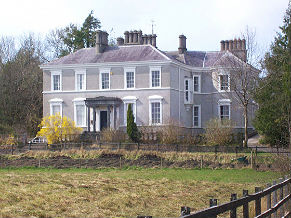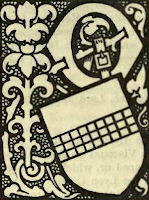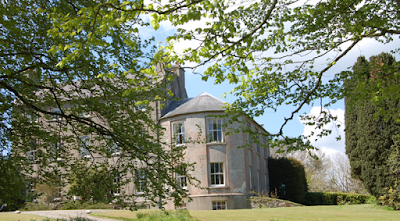He died in 1623, leaving a son,
WILLIAM ORME (1614-65), of Hanch Hall, who being a Royalist, suffered heavy fines and imprisonment at the hands of the usurper, CROMWELL.
He lived to witness the Restoration, and had a confirmation of his arms by Sir William Dugdale, Norroy King-of-Arms, 1665.
Mr Orme wedded Anne, daughter of Thomas Brudenell, of Staunton Wivell, Leicestershire, and had issue,
Thomas (c1637-1716), dsp;The third son,
William, Colonel in the French Army;
JAMES, of whom presently;
Robert;
Dorothea.
JAMES ORME, settled ca 1671 in County Mayo, where he purchased considerable estates.
He espoused Elizabeth, daughter of Thomas Barrow, of County Cork, and had issue,
ROBERT, his heir;Mr Orme died in 1707, and was succeeded by his eldest son,
William, of Ballintubber.
ROBERT ORME, of Carne, County Mayo, who married, in 1703, Elizabeth, daughter of James Johnston, and had issue,
Thomas, of Carne;The third son,
James, of Fairfield;
WILLIAM, of whom hereafter;
Robert (Congressman), settled in Jones County, USA;
Mary; Margaret; Lettice.
WILLIAM ORME JP (1810-76), of Owenmore, County Mayo, wedded firstly, in 1837, Janette, daughter of Christopher Carleton L'Estrange, of Market Hill, County Fermanagh; and secondly, in 1858, Margaret Barbara, eldest daughter of the Rev Savage Hall, Rector of Loughgall, County Armagh,
He dsp and was succeeded by his brother,
ROBERT ORME JP DL (1815-77), of Owenmore, County Mayo, and Enniscrone, County Sligo, who espoused, in 1843, Sidney Frances, daughter of Christopher Carleton L'Estrange, and had issue,
ROBERT WILLIAM, his heir;The eldest son,
CHRISTOPHER GUY, succeeded his brother;
Albert L'Estrange;
Janet Georgina, m 1882, Claude Brownlow, of Killynether.
ROBERT WILLIAM ORME JP DL (1856-1903), of Owenmore and Enniscrone, High Sheriff of County Sligo, 1879, died unmarried, and was succeeded by his brother,
CHRISTOPHER GUY ORME JP DL (1858-1929), of Owenmore and Enniscrone, High Sheriff of County Sligo, 1914, who married, in 1907, Mary Kathleen, daughter of the 1st Baron Morris and Killanin, and had issue,
ROBERT WILLIAM MARTIN, b 1908;
Lettice Frances; Cicely Dorothea.
OWENMORE HOUSE, near Crossmolina, County Mayo, built ca 1847, comprises two storeys over a high basement.
It has a five-bay entrance front, with a single-storey Doric portico.
The other side elevation has a two-storey bowed wing of similar style and height to the main block, though set back.
When the estate was decimated by the Land Acts, about 1926, it was sold to the Knox family.
It was sold again in 1950 to Major Marcus McCausland.
First published in July, 2012.




















